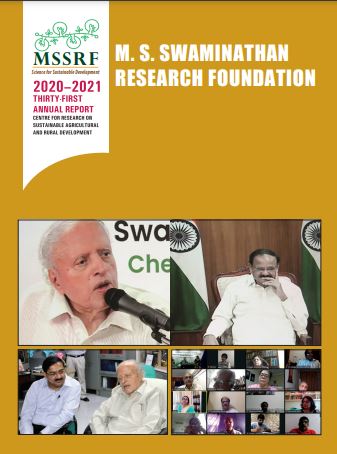The global decline of insect pollinators is part of a larger global catastrophic decline of insects and arthropods in general. Though there are many reasons, the important root causes include the intensification of agriculture, loss of foraging and nesting resources and large scale use of agrochemicals. Habitat loss and climate change-induced extreme weather events add more dimensions to it. As a consequence, gaps occur in the required availability of fresh pollen throughout the foraging season.

It further affects insects pollinators which play a crucial role in pollination in many agricultural, horticultural and forestry plants. Insects pollination contributes to one-third of food, including vegetables and fruits (honey bees, wild bees, flies, moths, butterflies, beetles, and ants).
This year, the COVID-19 Pandemic induced lockdown had allowed us to observe some pollinators in our native village in Meensurutty, Ariyalur District of Tamil Nadu, a Cauvery delta region of the State which receive 920 mm of rainfall annually. We observed that a diverse group of pollinators visited Pongamia glabra (Pungam – Vernacular; Fabaceae) inflorescence. We marked P. glabra at seven locations, including roads, field bunds, and semi forest areas for observation.
We observed that drought-tolerant perennial trees on the field bunds or commons land rescue pollinators in rural areas. P. glabra and other flowering trees host pollinators, especially during the peak summer season when main crops are absent or do not bear flowers. These trees survive throughout the year and bloom during hot, dry times, which help sustain the chain of pollination services.
We found that Hymenoptera (honeybees, wild bees, and ants), Diptera (syrphids and houseflies), and Lepidoptera (moths and butterflies) were the major groups of pollinators visiting the pungam flowers. There were 18 species of insects pollinators of families such as Apidae-6, Vespidae-2, Megachilidae-2, Hesperidae-1, Lycaenidae-2, Danaidae-1, Syrphidae-1, Muscidae-1, and Formicidae-2. These insects (bees and flies) are the primary pollinators to the crops, including vegetables and fruit crops in the main growing season.
P. glabra is a common tree distributed throughout India. It thrives well even at 38°C and does not require special attention. Annual rainfall of 500 – 950 mm is sufficient for the tree to grow up to 1200 m. It is a drought and flood-tolerant crop and produces new leaves in the early summer, mostly blossoms from April to July (hot summer). Flowers are white, purple, and pink and is rich in nectar and pollen. The leaf canopy provides a microclimate for the insect pollinators in the peak sunny hours. The majority of the insect pollinators have a wide range of hosts for their survival and reproduction, especially the native tree species that have good adaptation potential to the changing climate.
These wild tree species on roadsides, farm bunds, or uncultivated lands support pollination and fill the gap. However, declining such tree diversity due to the changing local landscapes and invasive plant species negatively impacts the pollinators. Besides, it provides new insights to the research team to explore the suitable forms of agroforestry practices that can be tested and promoted among small holding farmers. In the future, planting such drought-tolerant perennial trees on the field bunds or unused land within a field would help the pollinators to survive throughout the year and thus sustain the chain of pollination services.
Dr. S. Malarvannan, Senior Scientist, Mr. P. Manikandan and Mr. R.Ranjith, Senior Research Fellow’s associated in TROPICAL, A project focusing on augmenting pollinator services in partnership with University of Reading, UK.

